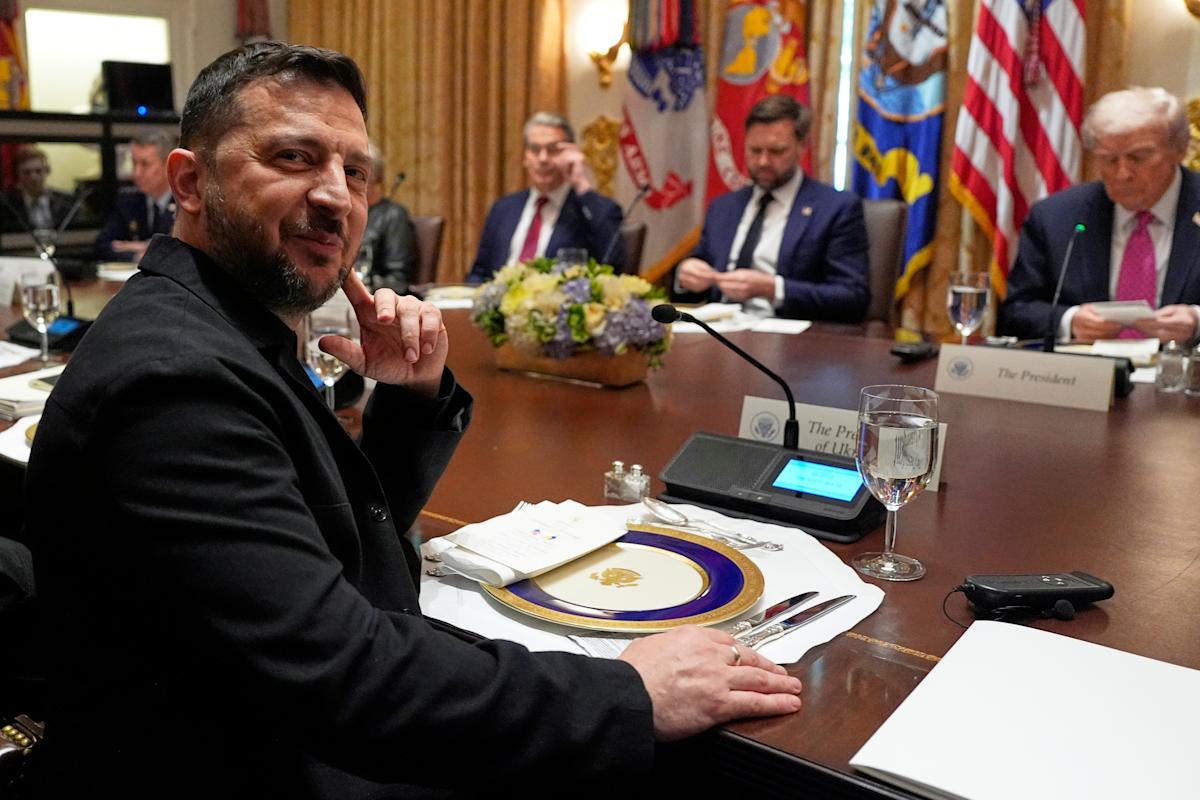Oil markets are trying to make sense of claims from Donald Trump about whether India and China will continue to purchase Russian oil, offering the latest example of how the president is willing to intertwine energy, trade, and geopolitics.
This past week has seen Trump repeatedly claim that India is soon set to buy “no oil” from Russia, which, earlier in the week, Indian officials declined to confirm.
Trump was unbowed, saying Friday at the White House, “They’ve already de-escalated.”
Equally significant as both sides navigate the oil issue is the fact that Indian officials were also in Washington this past week for the annual meetings of the IMF and World Bank, where they reportedly talked trade with the Trump administration.
On the table are 25% blanket duties on India over the issue of Russia oil purchases, on top of 25% “reciprocal” duties.
Read more: The latest news and updates on Trump’s tariffs
From right, President Donald Trump, Vice President JD Vance and Treasury Secretary Scott Bessent are seen during a meeting with Ukraine’s President Volodymyr Zelensky in the Cabinet Room of the White House on Friday. (AP Photo/Alex Brandon) · ASSOCIATED PRESS
The president is even suggesting that things could go further. He said this week that the possibility of India stopping its purchases would be “a big step” before immediately adding, “Now, I’ve got to get China to do the same thing.”
Trump then added Friday — while appearing alongside Ukrainian President Volodymyr Zelensky — that he might try to enlist China’s help in ending the war in Ukraine, saying “I’ll be discussing that” with Chinese President Xi Jinping before adding he is hopeful the war is over before the two men sit down.
Trump is set to meet with Xi at the end of the month at a summit in South Korea.
The week of news saw some muted declines in Brent crude oil prices — even as confusion was more evident.
As Oxford Economics put it, “President Trump said India will end Russian oil purchases, although the relatively muted market reaction suggests some skepticism.”
Even small movement — such as if Indian oil purchases simply decline but don’t fully stop as Trump has suggested — could be significant given the Russian economy’s deep dependence on energy revenues.
A spokesperson for the Indian foreign ministry only outlined generalities to reporters this week, discussing India’s energy efforts as “diversifying as appropriate” when it comes to oil, as well as promising more imports from the United States.
But there is some evidence that some cutbacks are in the offing. A Reuters report from New Delhi found that some Indian refiners are preparing to trim their Russian oil imports.
Russian oil currently makes up about a third of India’s energy mix, trade data shows, and even a limited drawdown could be significant to Russia’s revenue picture.
